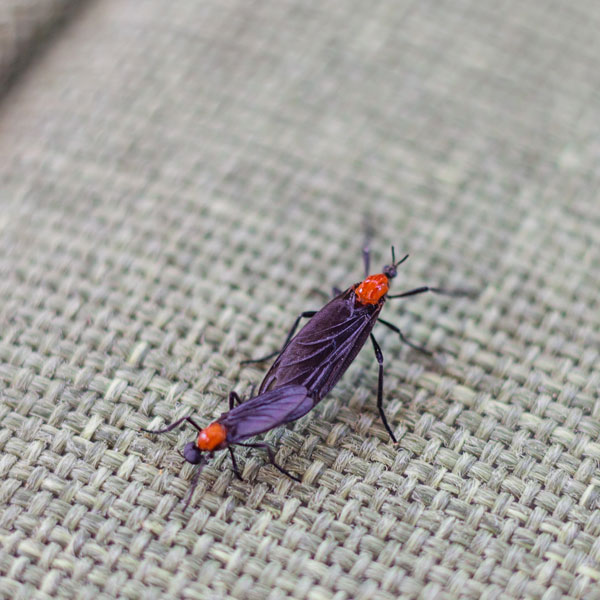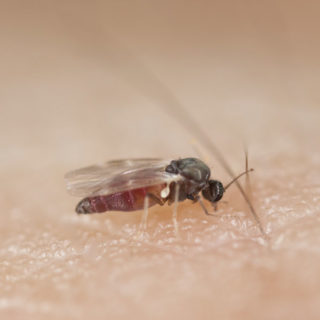Lovebugs in St. Louis
Lovebugs get their name as they are often seen in pairs or “stuck” together when mating. Closely related to gnats, mosquitos, and sand flies, lovebugs are social insects that swarm in large numbers. Their flights generally occur in late spring and summer, just after the females emerge. During this time, lovebugs become a nuisance as they enter homes, splatter on windshields of vehicles, and land in the mouths of joggers and cyclists outdoors.
Lovebug Habitat
Like many insects, lovebugs enjoy dark, wet, and humid habitats. When looking for a suitable site to lay her eggs, female lovebugs will seek out moist areas that contain food like rotting grass, mulch, or compost beds. If a structure is located close to an area that is known for lovebug infestations, it increases the likelihood that insects will enter the home. If excess moisture exists in damp areas of homes like basements or storage rooms, it may encourage the type of vegetation that lovebugs like to feed on, attracting these nuisance pests.
Lovebug Behaviors, Threats, or Dangers
While lovebugs do not bite humans or pets, they can cause a great deal of damage and odor to affected homes and cars. A lovebug’s acidic body chemistry can wreak havoc on the paint of vehicles. Their fatty tissue can eat through a car’s finish when left in the sun. As they perish in large numbers on windshields, hoods, and radiator grates, after a few hours, they can become almost impossible to remove without harming a painted surface. If you are dealing with a lovebug issue on your property, contact your local fly exterminators.
Need help with Lovebug control?
Need Pest Control Service?
Leave your information below and we’ll be in touch with a FREE quote!
"*" indicates required fields
*During normal business hours. After hours calls will be returned the next business day.





